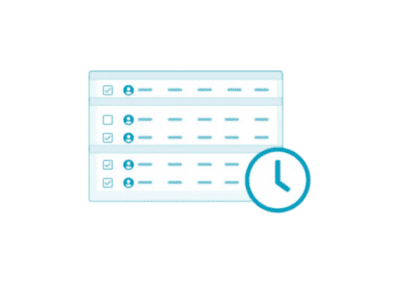Flexible work has been a hot topic amongst HR professionals since telecommuting became mainstream in the 1980s. Even more recently, the pandemic has completely changed the way we view work and our work schedules. With that, both remote work and flexible work are on the rise. It’s an option primarily for office workers and salary-based employees. Flexible work for office-based workers encompasses both telecommuting, and compressed workweeks, job sharing, and alternative work schedules. When it comes to shift work, it can incorporate shift bidding, self scheduling or even shift swapping. However, these are much less common.
Thanks to a considerable amount of study on the subject, we now know who flexible work affects the most. We’ve also come to witness the positive outcomes associated with it:
Employee Engagement

The results from a recent survey by Gallup show that the American workforce is becoming increasingly disengaged. The percentage of actively disengaged employees is up from 14% in 2020 to 15% through June 2021. This is leaving companies on the hook for huge costs. The same survey showed that employees were more likely to be engaged and productive when given flexible work arrangements. They found that the optimal engagement boost occurs when employees spend 60% to 80% of their time working off-site — or three to four days in a five-day workweek.
Retention
Employee retention is at an all time low in the U.S workforce. A study by SHRM showed just how important flexible work arrangements are to employees. A majority—78 percent—said that flexible work would allow them to live a healthier life, and 86 percent said they would be less stressed. The savings for companies that have a low employee turnover rate are pretty significant. The average cost of replacing an employee earning $8 per hour is roughly $3,500.
Mothers and Millennials
Flexible work arrangements have often been cited as a way for women to break the glass ceiling at work; it is increasingly difficult for women to climb the corporate ladder and have a family at the same time. In addition, an astounding 37% of millennials would take a pay cut if it meant they could receive flexible work arrangements, and 89% feel that work-life balance is essential to happiness at work.
What about Hourly/Shift Workers?
However, hourly and part-time workers are largely left out of flexible work conversations. Yes, those performing office based functions may be able to accomplish desk work from home. However, for hourly workers in service roles, being physically present at work for a set number of hours is essential.
Hourly and part-time workers also face a number of specific challenges related to scheduling; including instability, unpredictability, and rigidity. Flexible scheduling could most powerfully impact the rigidity faced by hourly workers, defined by workplace flexibility as the “Lack of control over the scheduling of work hours, including overtime or extra work hours; lack of input into starting and quitting times; and lack of control over break times”. Rigidity is a real problem for hourly workers. Unlike workers in salaried positions, any deviation from employer imposed scheduled hours could result in job loss.
The Flexible Work Answer for Hourly Workers
Often overlooked and undervalued, collaborative and self-scheduling is an answer to the lack of flexible work for hourly workers. At its most basic level, collaborative employee scheduling using workforce management software minimizes operational costs. Through more efficient workforce deployments, it also improves employee satisfaction and retention through an improved allocation of labor resources.

Collaborative Scheduling
Collaborative scheduling encompasses three main functions: collection of scheduling preferences, incorporation of scheduling preferences, and schedule distribution and confirmation.
It shifts the responsibility of collecting employee availability and time off requests into the hands of employees, and eliminates error-prone processes that lead to scheduling errors. It goes one step further than typical scheduling automation, by adding another layer of employee input at the confirmation stage. Each time a schedule goes out, employees have the ability to confirm their shifts or state their unavailability by refusing the shift. Then, schedule coordinators can open the shift up to available employees in advance.
Self-Scheduling
Self-scheduling goes one step further by making a list of available shifts to employees and enabling them to sign up for shifts they prefer and are available for, while programming the employee scheduling software to maintain and incorporate all the required business parameters, such as overtime restrictions and minimum rest periods. Management therefore is only responsible for filling the few left over shifts that remain unclaimed.
With 59% of the American workforce receiving an hourly wage, and the increasing importance of flexible work both to the bottom line and employee satisfaction, collaborative and employee self-scheduling are increasingly important tools in HR’s toolbox.
Shift Bidding
Shift bidding is when the scheduler allows employees to express their interest in an open shift by placing a “bid” on it. At Celayix, employees get notified when a new shift has been released for shift bidding. If they’d like to work that shift, they bid on it, and the scheduler can see bids as they come in. The scheduler can then choose who they feel is the best fit, or they can use autofill to let the software choose the “best fit” employee. This is a great way to provide some level of autonomy to employees, while maintaining final say over the schedule.
There is also the option of allowing you employees to swap shifts. We break down how to create an effective shift swapping policy in a recent blog post. It’s important to have rules and policies in place if you do let employees swap shifts. This is a good way to allow employees some level of flexibility while ensuring all shifts are covered. If you’d like to hear how Celayix can help you provide flexible work arrangements for your employees, get in touch today!





